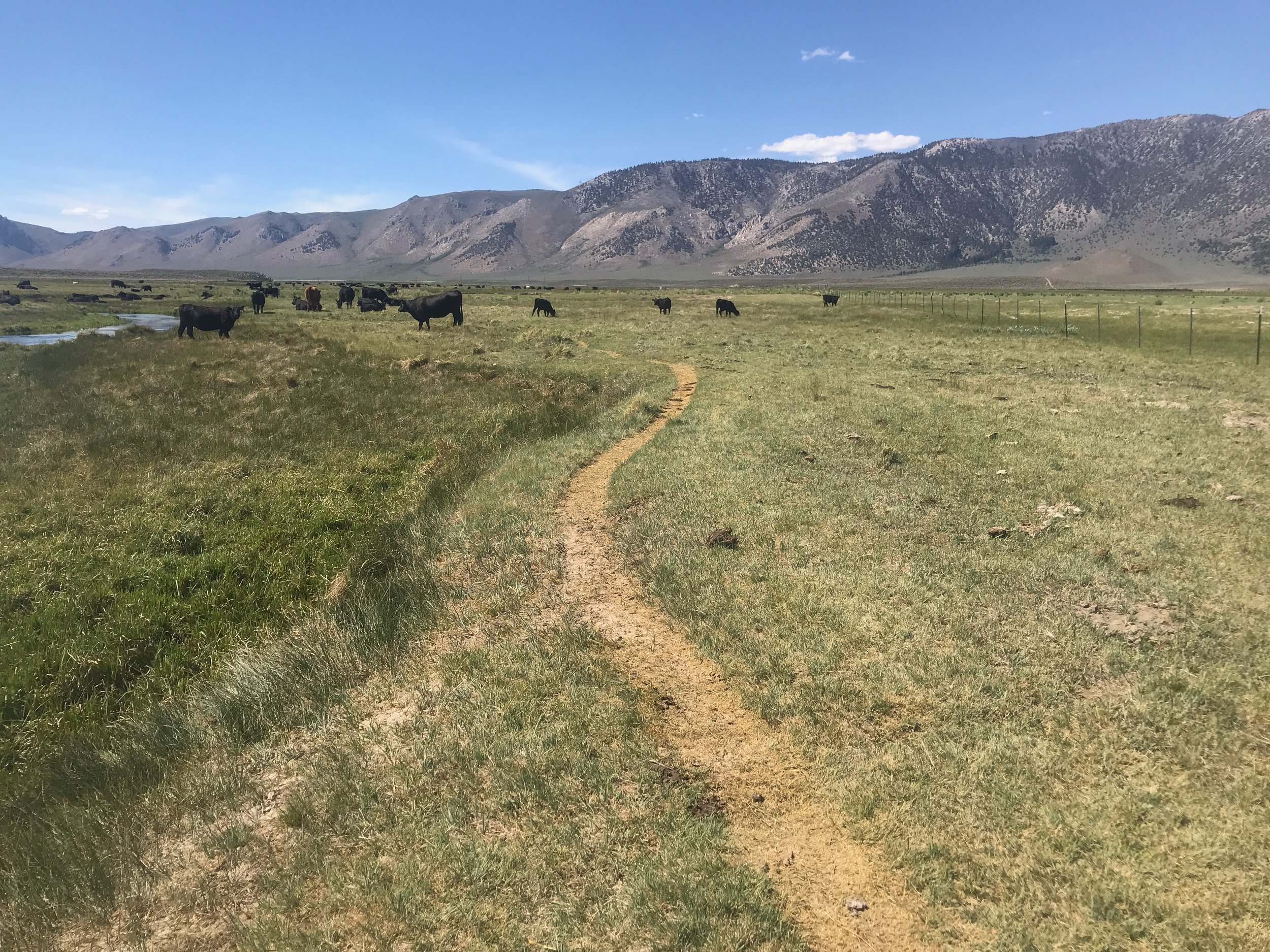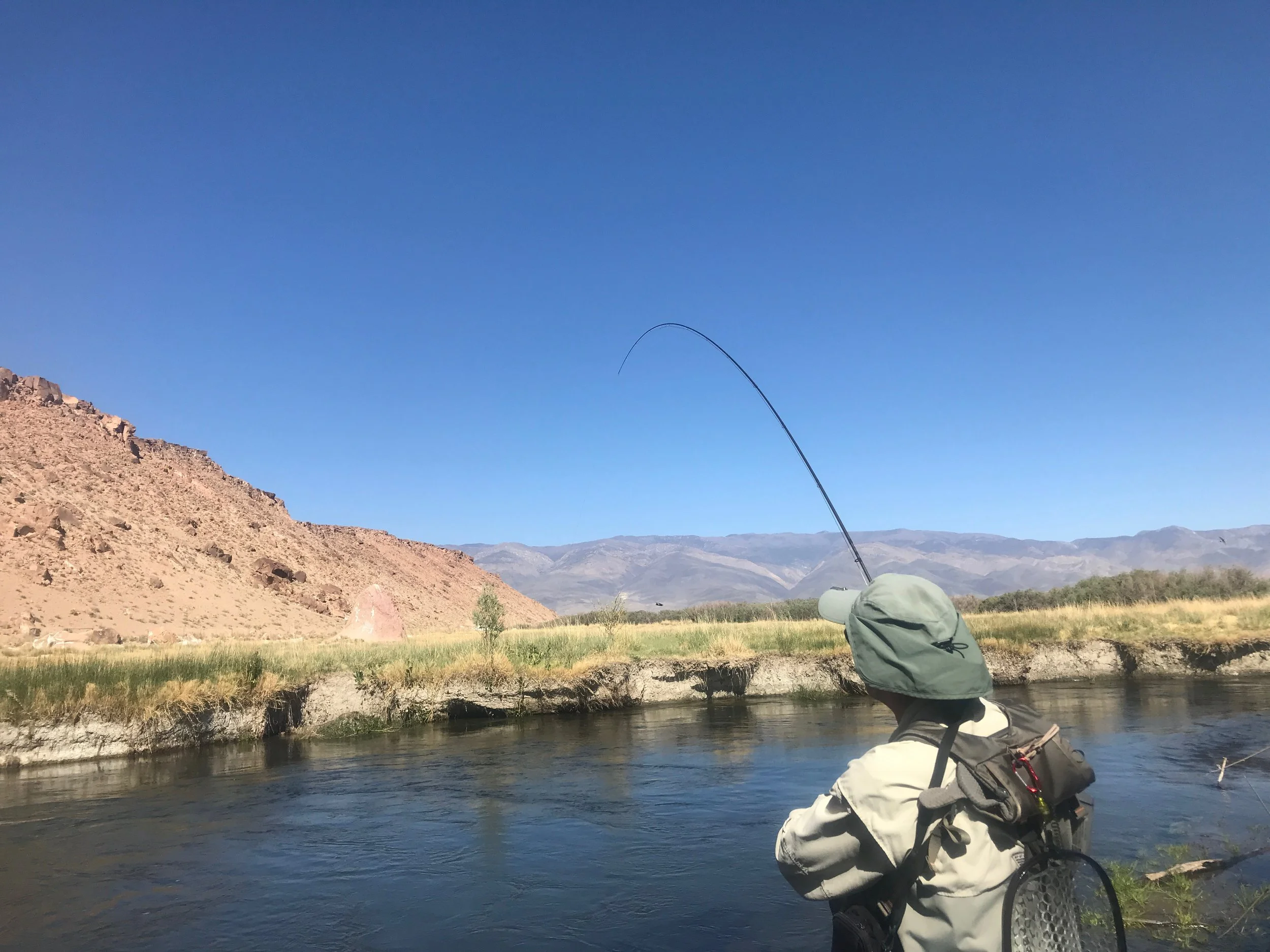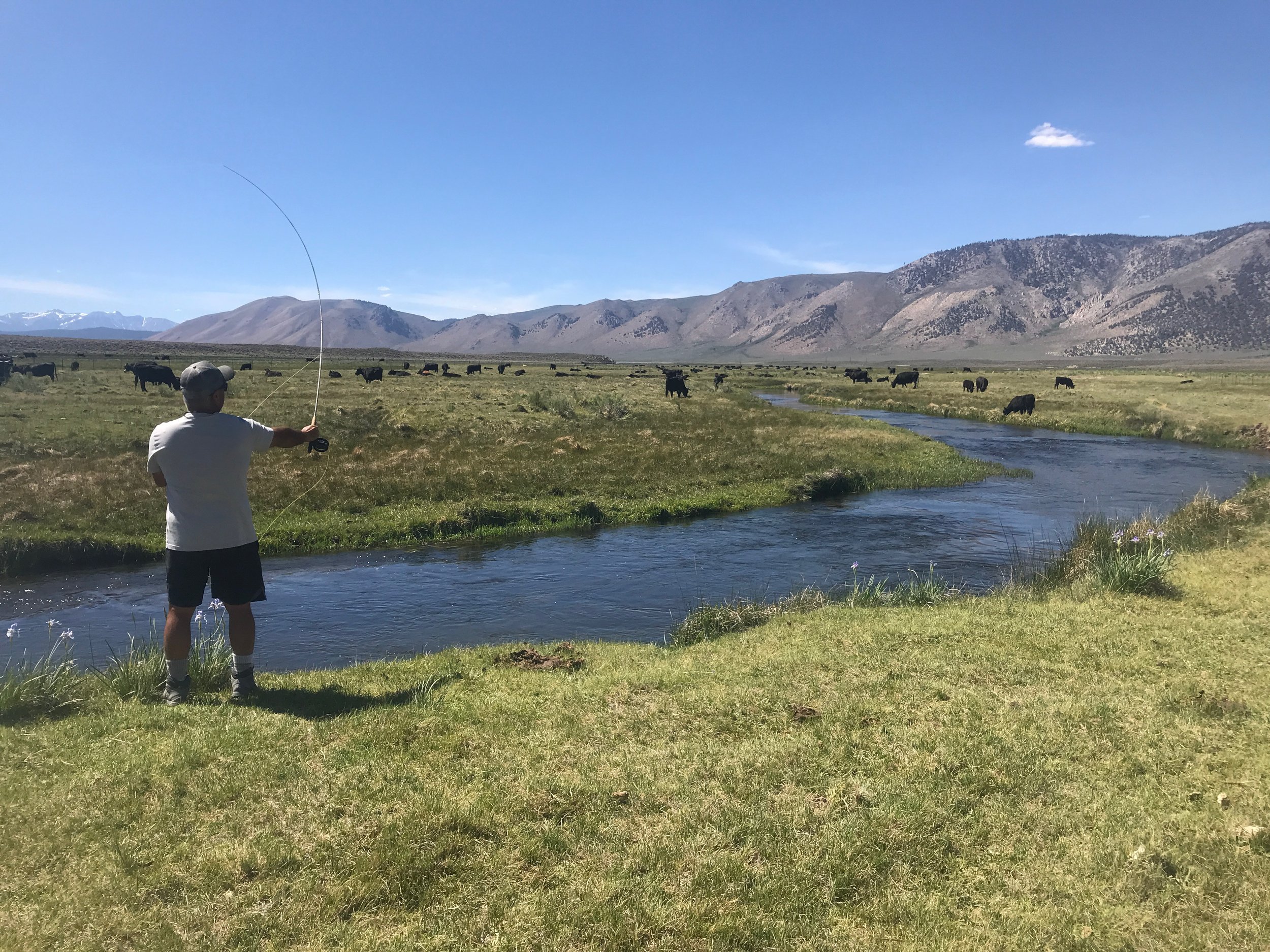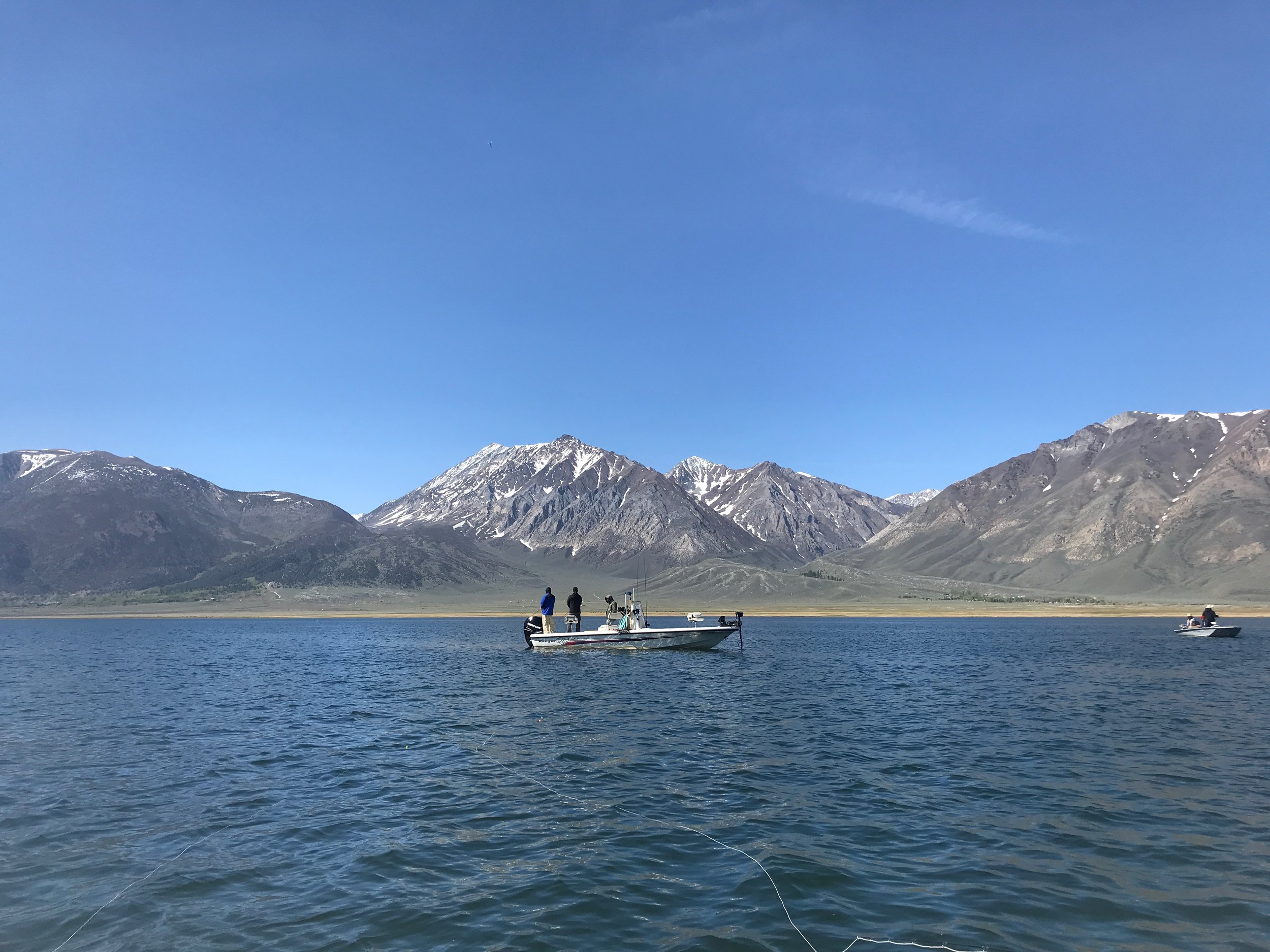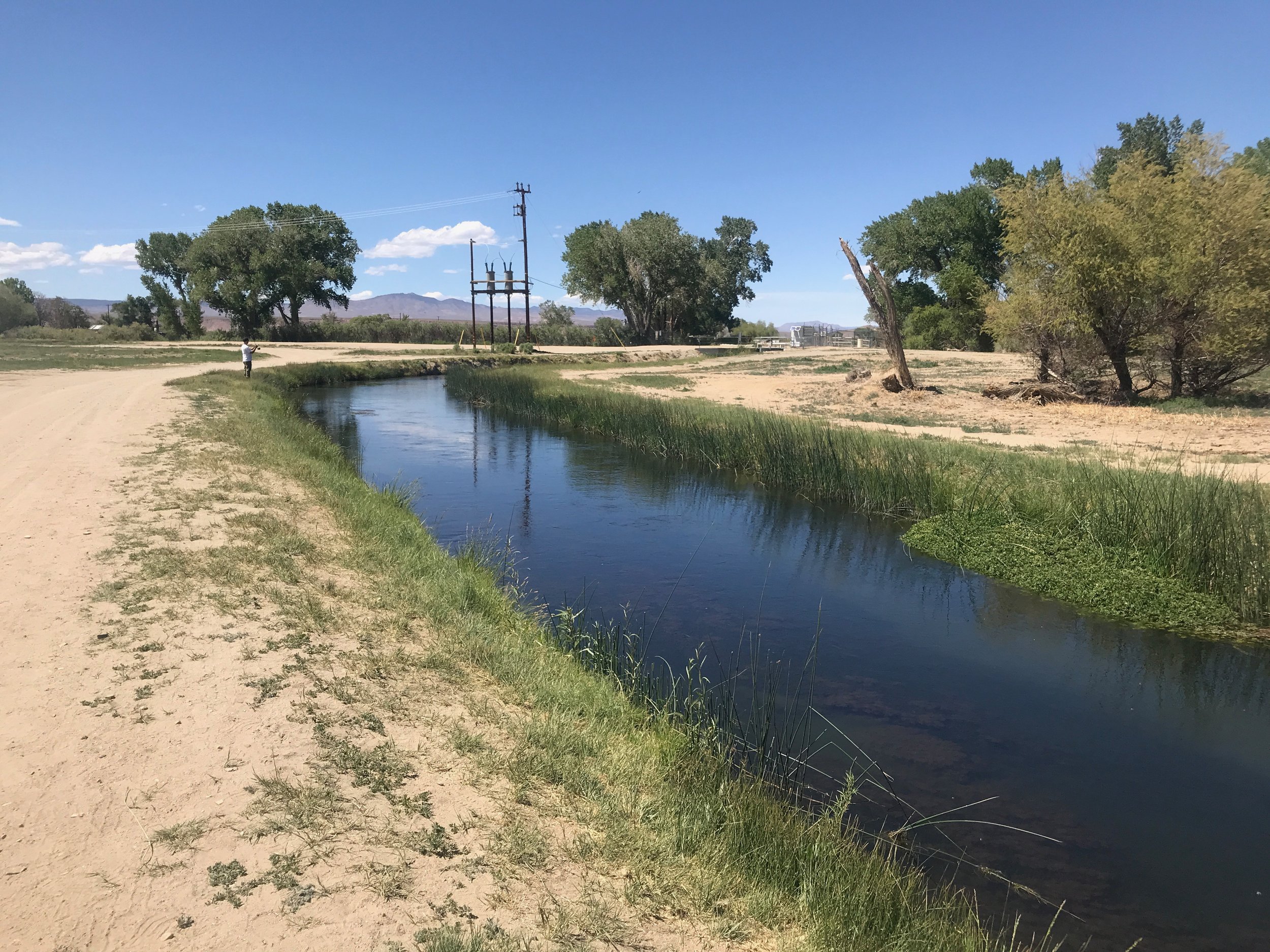The days, particularly in the Owens Valley, are starting to heat up. We are still dealing with windy days in the Eastern Sierra. When the wind lays down the days have been nice, really nice! Hatches of mayflies, caddis flies, and stone flies are starting, but are not sufficient yet for really good days of selectively feeding trout on the surface. Nymphing continues to offer the bulk of the fly fishing opportunities in the Eastern Sierra.
The cows have been moved to summer pasture and it’s time to hit the high country in search of trout feeding on the surface.
Lower Owens River:
Wild Trout Section:
The lower Owens River has stabilized at 225 CFS for over a week now. The river is wade able, but fly fishers need to be cautious at these flows. The increased flows have slowed down the fish feeding on the surface on the hatching mayflies, caddis flies, and stone flies. Nymphing with the Euro nymph rod has been the most productive. I’ve increased the weights on my middle and upper fly on my three fly rig. This is to get the flies down on the bottom where the trout are feeding. Fishing under an indicator requires the use of at least one or maybe two BB sized weights. Try fishing size 16 bead head gold ribbed hare’s ears, size 18 bead head flash back pheasant tail nymphs, size 12 stoner nymphs, and size 16 Butano nymphs.
Hooked up on the lower Owens River while nymphing a deep hole from the opposite bank.
Hot Creek:
Interpretive Site:
Hatches of gray caddis, and blue wing olive mayflies have started but are not strong enough yet to bring lots of wild trout to the surface. Fishing a nymph on the bottom is still the best producer. I’ve been fly fishing with bead head flash back pheasant tail nymphs, and gray caddis emergers. I’ve been fishing these under an Adams Parachute or a mini Chernobyl Ant. I’m using size 20 blue wing olive parachutes, and size 20 gray partridge spent caddis on the surface when I can cast to rising trout.
The iris are blooming along the bank of Hot Creek, but they never last long enough for me.
Hot Creek:
Canyon Section:
The canyon section of Hot Creek has been the most productive area on Hot Creek. The trout are taking nymphs under a dry fly. I’ve been fly fishing with olive scuds, bead head flash back pheasant tail nymphs, and olive burlap caddis. I’m using a size 16 Adams parachute and a size 14 mini Chernobyl Ant for the dry fly. The hatches in the canyon have been sporadic, but if you see rising trout trying throwing a size 20 blue wing olive parachute to them.
Jeff Duran from Corona indicator nymphing the pale morning dun hatch on the upper Owens River.
Upper Owens River:
Above Benton Crossing Bridge:
Hatches are just getting started on the upper Owens River. Pale morning duns, and caddis are on the water and trout are rising to them. Nymphing has been the better producer. I’m fishing bead head flash back gold ribbed hare’s ears size 16, bead head flash back pheasant tail nymphs size 18, stoner nymphs size 12, and green/gold Prince nymphs size 12. I’m working the riffles and the pools. There are trout in both habitats taking flies.
Floating midges under indicators in McGee Bay on Crowley Lake with the mountains as the backdrop.
Crowley Lake:
Water temperatures are starting to warm up and the trout are starting to move into deeper water. Try fly fishing your midges in 15 to 30 feet of water. Hilton Bay, north west corner of McGee Bay, and Six bays are producing trout. Not all spots are created equal and it pays off to move around if you’re not catching trout. Grey, tiger, zebra and Albino Barron midges fished three inches to three feet off the bottom are producing bobber downs.
Bishop Creek Canal is full of water and the weed beds are mature and offering hiding spots for the trout.
Bishop Creek Canal:
Behind the Ford Dealer:
Water levels are full in the canal and the weed beds are fully developed. These two habitats are making for good trout habitat and the trout are feeding on nymphs. Bead head flash back gold ribbed hare’s ears, and bead head flash back pheasant tail nymphs are fooling wild brown trout to 12 inches.

